
March 15 has become a symbol of our nation’s love of, and will for freedom. In 1927, it was officially declared a national holiday for the first time. From then on, all political actors try to use the celebrations to send their own political messages to the Hungarian people. Since the 1940s, it has been like this, and it is no different today. With the help of Fortepan’s photo collection, we would like to show you how March 15 has been celebrated in Hungary throughout history.
This article was originally published on our sister-site, Ungarn Heute.
On March 15, 1848, the revolution broke out in Pest-Buda as part of the widespread European revolutionary wave. The main slogans were about the national sovereignty and civic transformation (“equality, liberty, brotherhood”) of the country, with the aim of ending Habsburg rule and achieving independence and a constitutional order. After the end of the War of Independence, all social classes secretly cherished the memory of March 15. After the Austro-Hungarian Compromise of 1867, commemoration became freer, but also more cautious in the interest of Austro-Hungarian cooperation. However, the day on which the laws of 1848 were ratified, April 11, was declared a holiday. March 15 did not become an official national commemoration day until 1927. It was then abolished by the communists in the 1950s (the 1956 Revolution revived the ideas of 1848 in various points) and later reestablished as a strictly redefined holiday.
March 15, before the outbreak of World War II (1939), was also significant, because on that day the Hungarian army occupied and practically annexed the whole of Transcarpathia. Under the First Vienna Award of 1938, Czechoslovakian territories in southern Slovakia and southern Carpathian Rus (that were mostly populated by Hungarians) were returned to Hungary (these territories are now parts of Slovakia and Ukraine). In the Horthy era, March 15 was not considered a celebration of national independence, but an important part of the history of the suffering of Hungarians after the Treaty of Trianon.
The commemorations during the World War also became anti-war demonstrations, and the demonstration at the Petőfi statue in 1942 was the largest peace rally in Central Europe.
March 15, 1942, Heroes’ Square, March 15 celebrations, Museum of Fine Arts in the background. István Horthy and his wife on the podium, center.
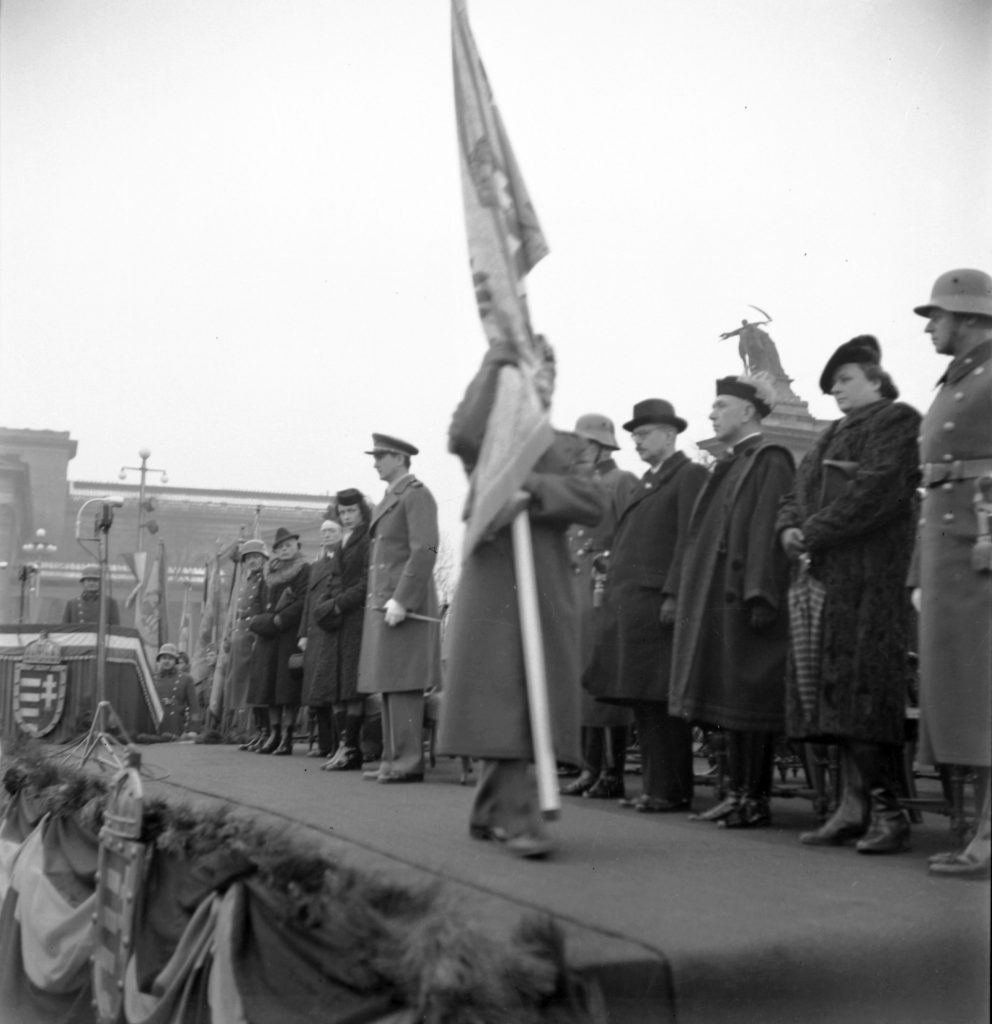
Fortepan /Zsolt Pálinkás
March 15 celebrations in Heroes’ Square in 1943 and how the state television station reported on it:
“On the National Day, March 15, the Budapest brave warriors (called “levente” in Hungarian) gathered in Heroes’ Square to listen to the radio message of governor Miklós Horthy of Nagybánya adressed to the youth of the country. “Hungarian young brave warriors! Together with all the youth of the country, I address you first and foremost, for a great task awaits you. You must take the place of the youth of March 15, 1848! With the same enthusiasm you too must work for the great ideals and goals of the nation! Today you are the hope of our country, the creators of the Hungarian future (…) For the country today it is a question of existing or not existing. Stand up against the aspirations of all intentions that want to destroy the unity of society!” (Source: filmhiradokonline.hu).
When the communists began their rule in the country, the redefining of the holiday also began, completely subordinate to political interests. While by 1945 the holiday had internalized the values of parliamentary democracy and the legacy of Kossuth, from 1947 the increasingly autocratic Communist Party sought to see in the events of 1848/1849 an anticipation of itself. All the goals of 1848, from freedom of the press to the recalling of foreign soldiers to national independence, were unacceptable to a political power backed by the Soviet occupation, so a complete reinterpretation of the meaning of March 15 was started. The main message of the 1948 Centenary was that the Party of Hungarian Workers would preserve the legacy of 1848.
1947 Kossuth-Lajos Square, March 15 celebrations, with the Ministry of Agriculture in the background
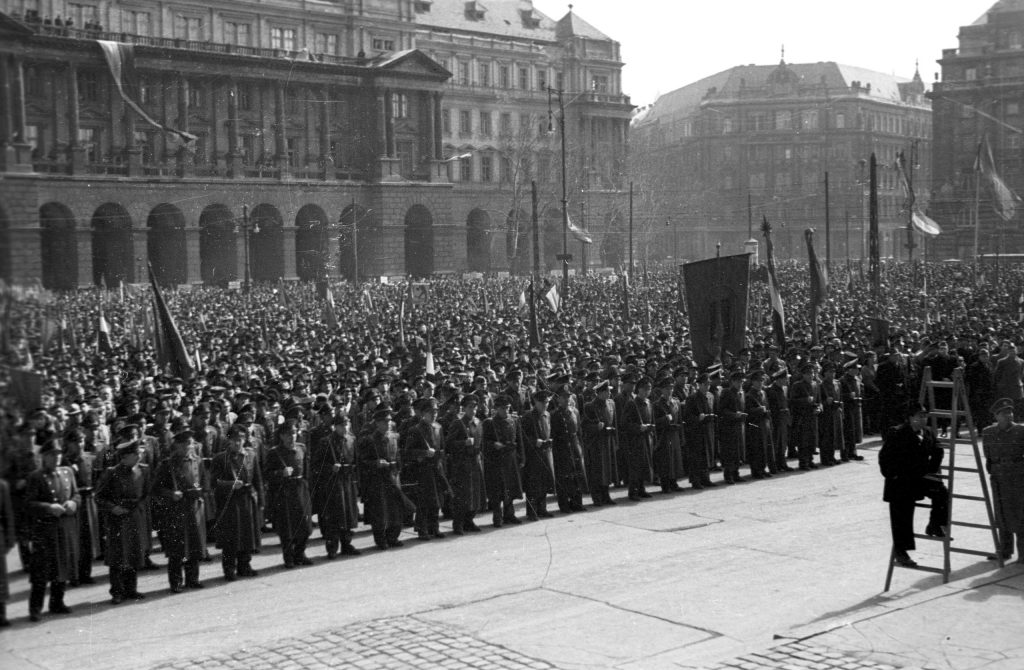
Fortepan / Pál Berkó
Kossuth Lajos Square, March 15 celebrations, guests of honor in front of the Parliament
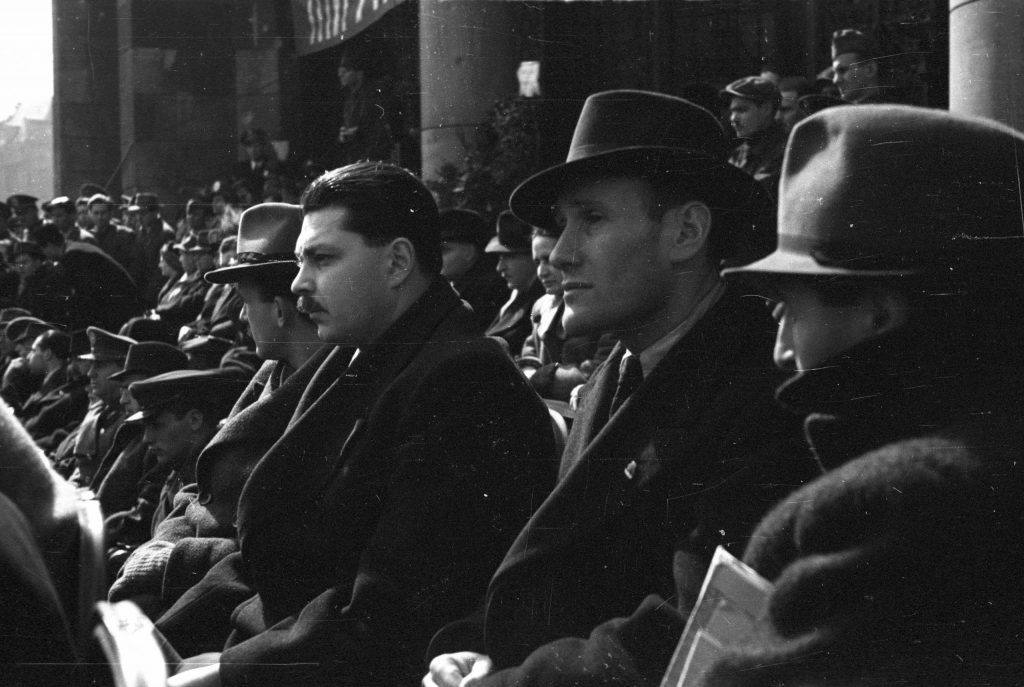
Fortepan / Pál Berkó
On behalf of the Hungarian Communist Party, Minister of Interior László Rajk delivered a ceremonial speech on the podium, with Parliament in the background.
“There is only one continuity of rights here: the continuity of the democratic struggle of the working Hungarian people for a free Hungary. Anyone who crosses its path will be destroyed.”
(Excerpt from László Rajk’s speech)

Fortepan / Pál Berkó
In front are Péter Veres, Minister of Defense, and Ferenc Erdei, Minister of Agriculture.

Fortepan / Pál Berkó
Hundreds of people also gathered in the Museum Garden, and the state television station reported on the celebrations as follows:
“Hungarian youth gathered in the Museum Garden to pay homage to the glorious commemoration of March 15 in front of the sacred steps. The Secretary General of the National Council of Hungarian Youth, György Nonn, gave a speech. The true, free Hungarian youth professed their faith to the spirit of Sándor Petőfi. The Hungarian Partisans Brothers in Arms Association celebrates March 15 with the exhibition “Freedom.” After an introduction by General Sólyom, the President of the Republic, Zoltán Tildy, solemnly opens the exhibition, which connects the centuries-old struggle of the Hungarian people with the present of liberated Hungary. The President of the Republic will award the Order of Freedom to the relatives of those who heroically died and the still living freedom fighters. The exhibition will include mementos of the heroes of the 48th Army, as well as the instruments of torture under which our glorious ancestors suffered for the cause of freedom.
(Excerpt from the news of March 15, 1947)
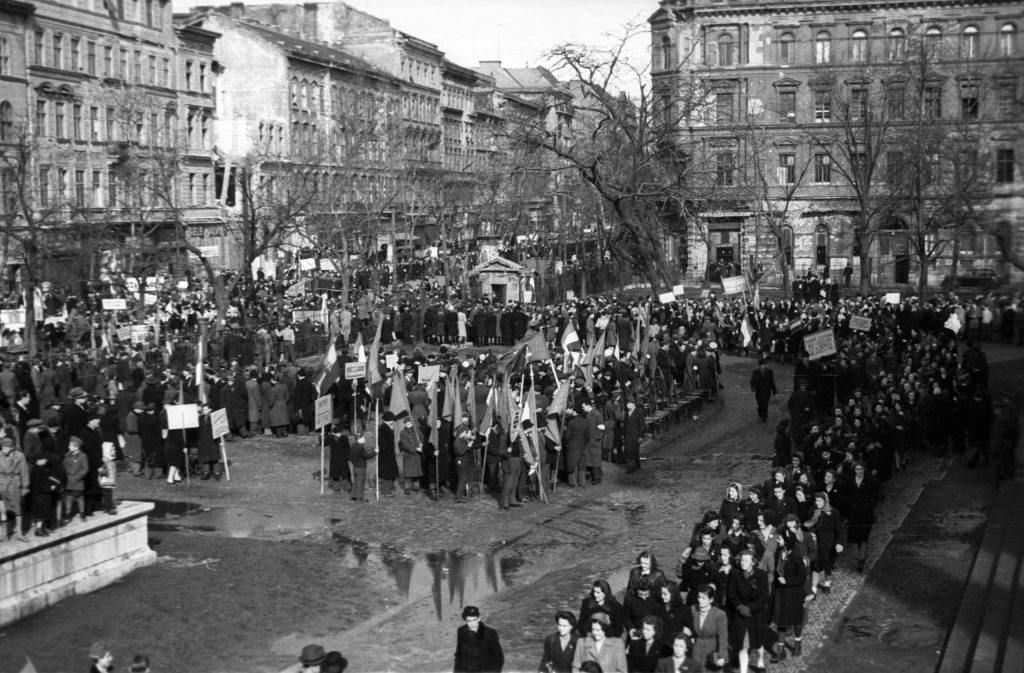
Fortepan / Pál Berkó
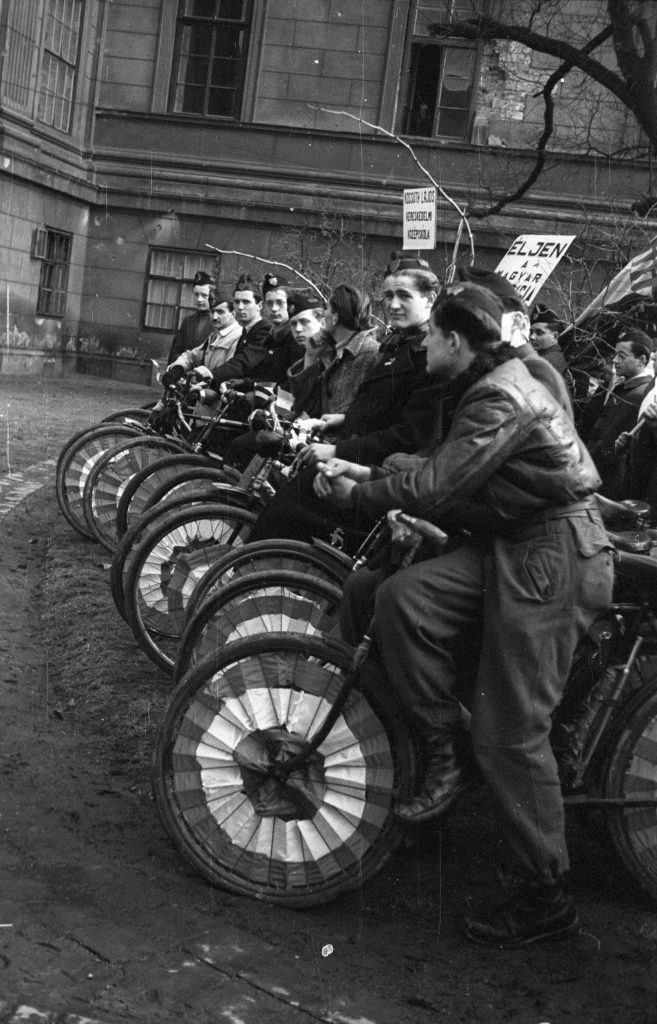
Fortepan / Pál Berkó
“Rebuilt homeland, happy people,” is written on one of the signs. Photo: Fortepan / Pál Berkó
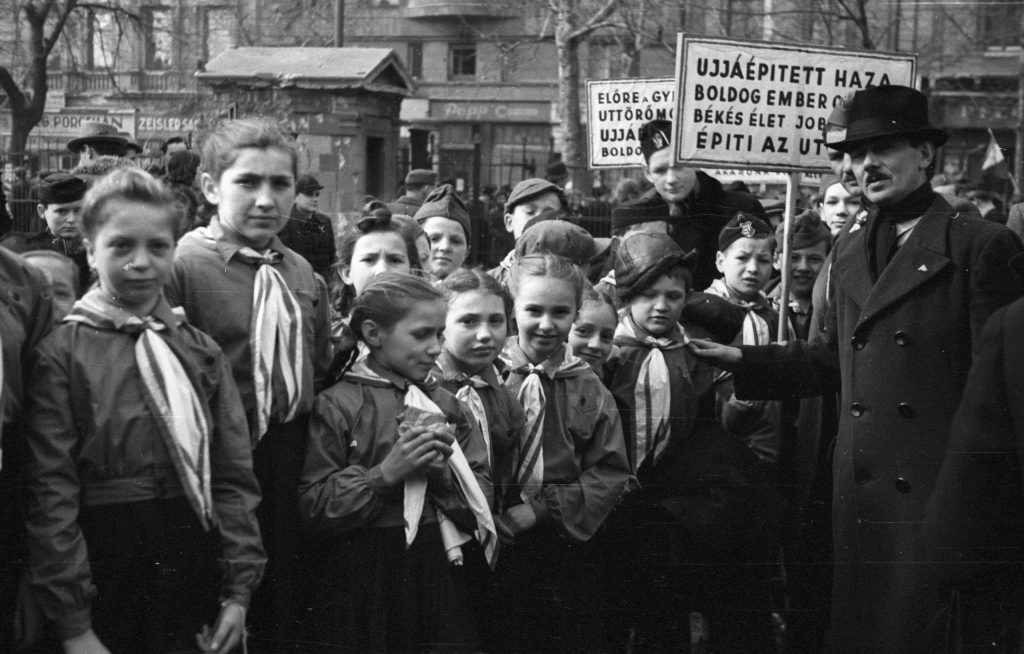
Múzeum krt. / Museum Boulevard 31 in Budapest: spectators at the March 15 celebrations in Museum Garden, photo: Fortepan / Pál Berkó

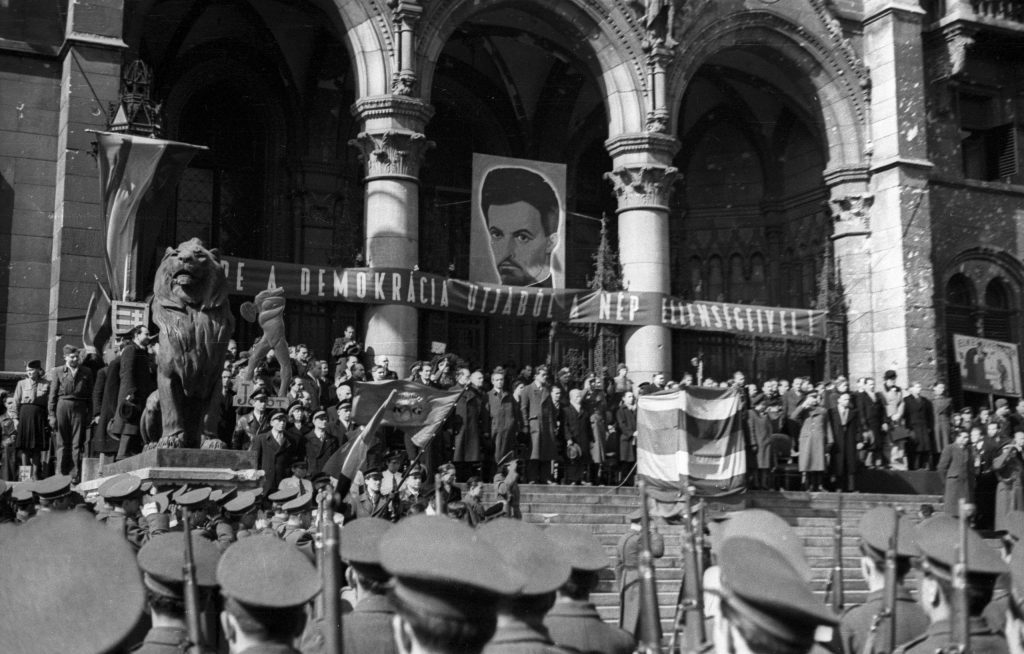
Fortepan / Pál Berkó
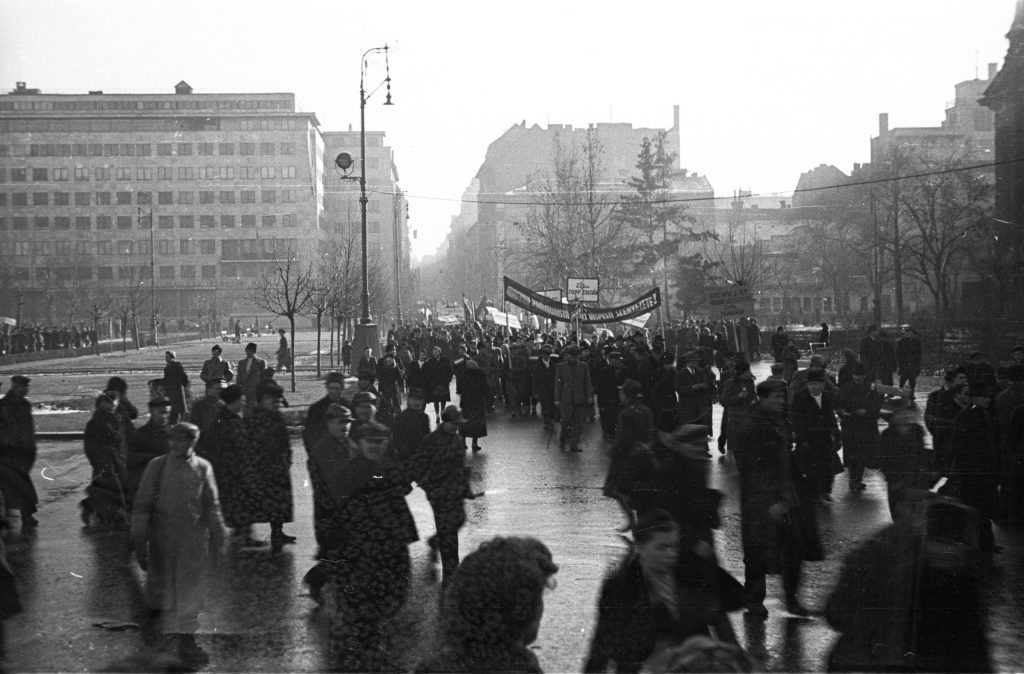
Fortepan / Pál Berkó
“The factory in Vác Street gives the rope to the conspirators for free” – writing on one of the commemorative signs. Photo: Fortepan / Pál Berkó
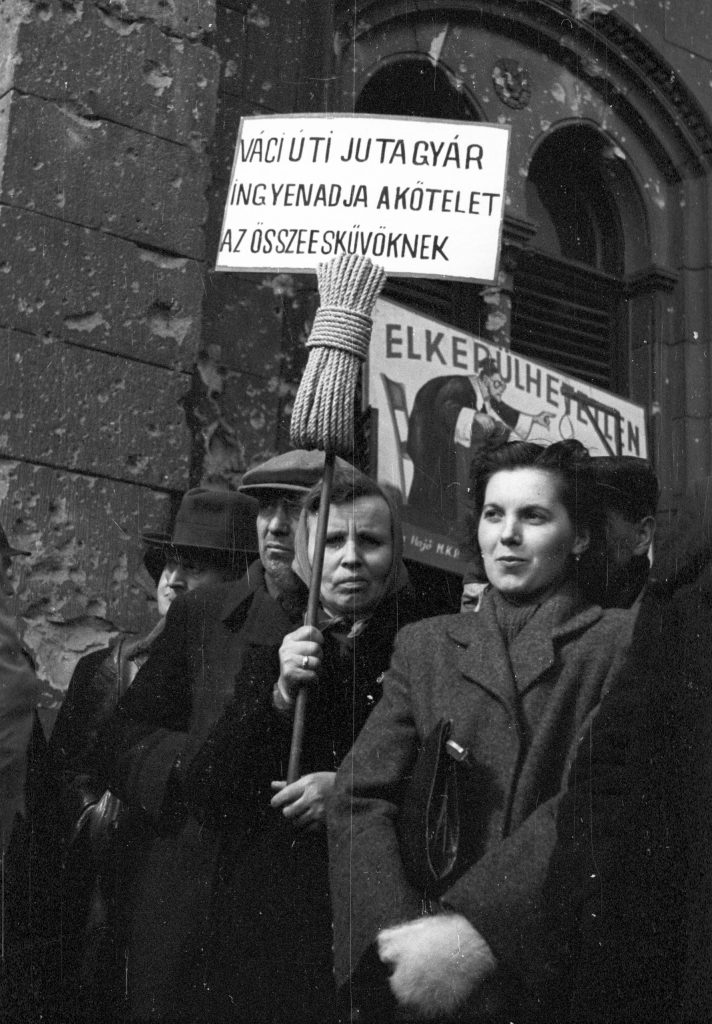
1950 – “Happy life, free youth” proclaim the celebrants on the holiday of freedom, then already under the rule of the merciless dictator, Mátyás Rákosi.
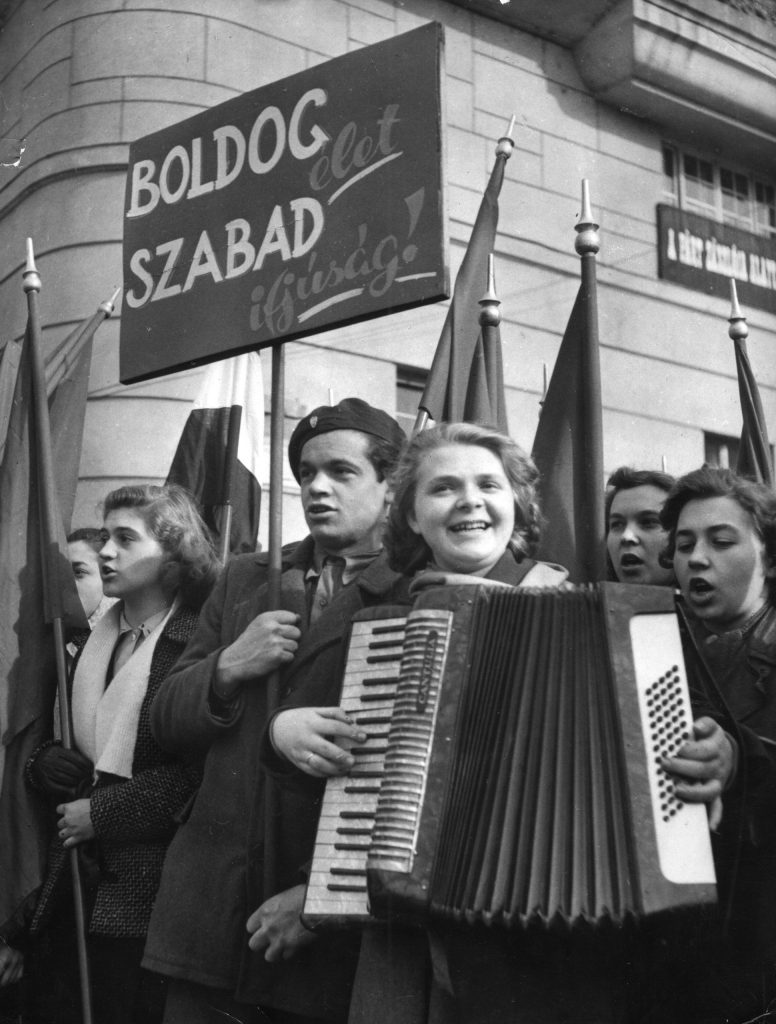
március 15 fortepan
1952 – Museum Garden, March 15 Celebrations seen from the steps of the Hungarian National Museum Photo: Fortepan / Magyar Rendőr

After 1956, the authorities ensured even more that March 15 could not be celebrated freely, because the 1956 Revolution also began with the slogans of March 15 of 1848, the singing of Kossuth songs, the commemoration at the Bem statue, and the hoisting of national flags. So those who celebrate March 15 wholeheartedly are also standing up for the Revolution of 56, historian Krisztián Ungváry wrote in an article on hvg.hu.
It is a common but false belief that after the “consolidation” of the Kádár regime in 1964, there were no more politically motivated court proceedings. The series of brutal reprisals that followed March 15 proves that this claim is not true. Although there were other “important dates” such as October 6 and October 23 (both of which are national holidays) when some people organized their own commemorations, most of the major police actions were associated with March 15.

1970 Fortepan / Tamás Urbán
Returning again to the Museum Garden a few years later, in 1976. Photos are taken by Sándor Rubinstein/Fortepan.
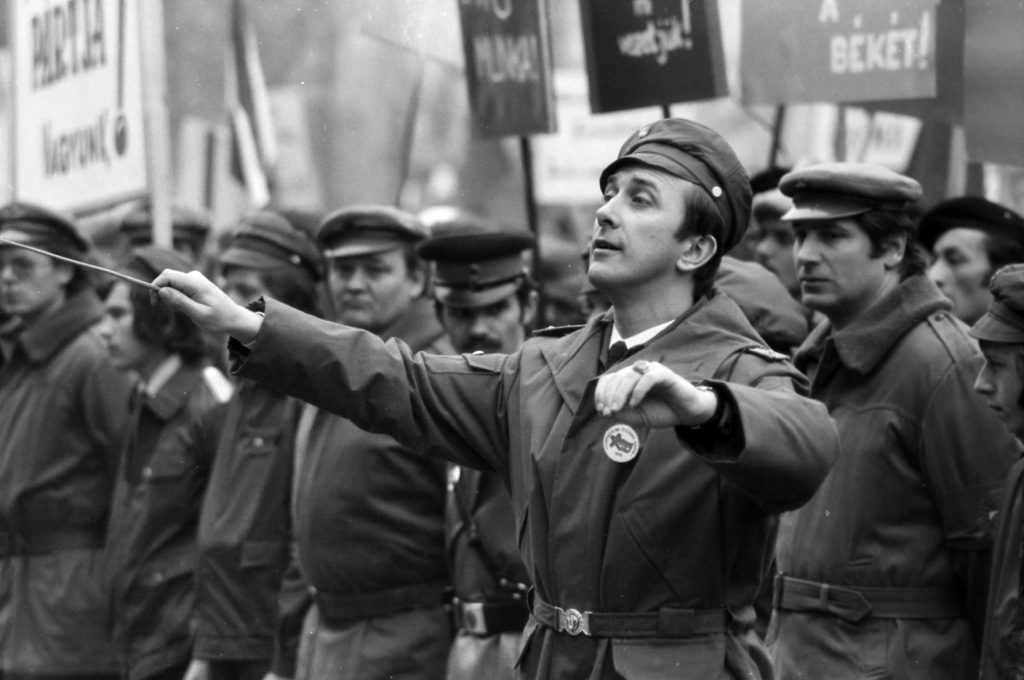

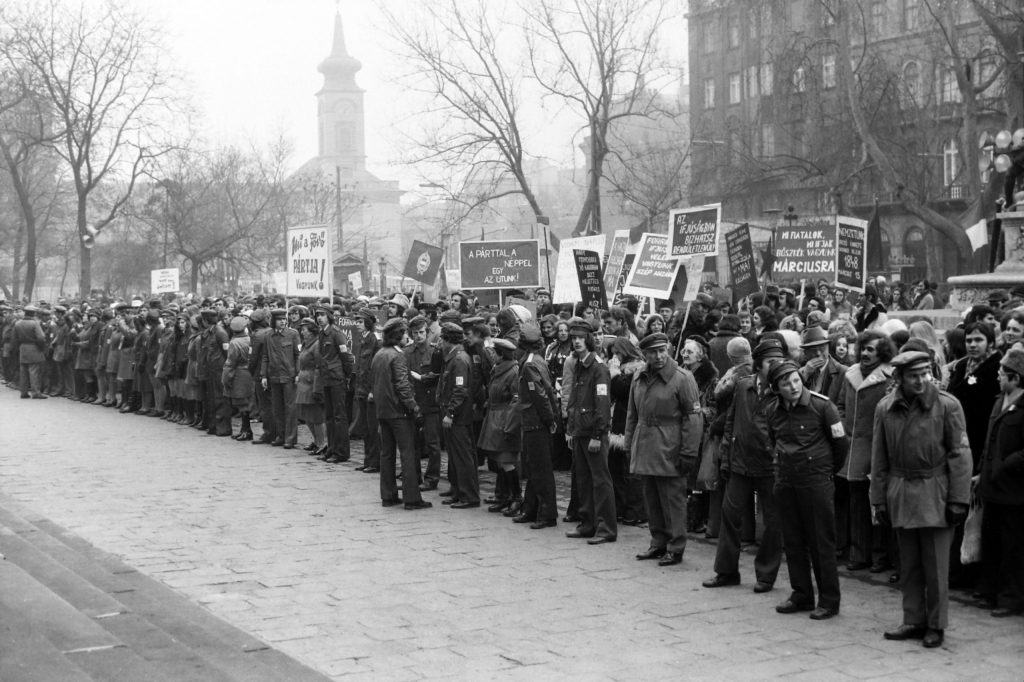
1980 Múzeum Boulevard Fortepan / Gábor Viktor
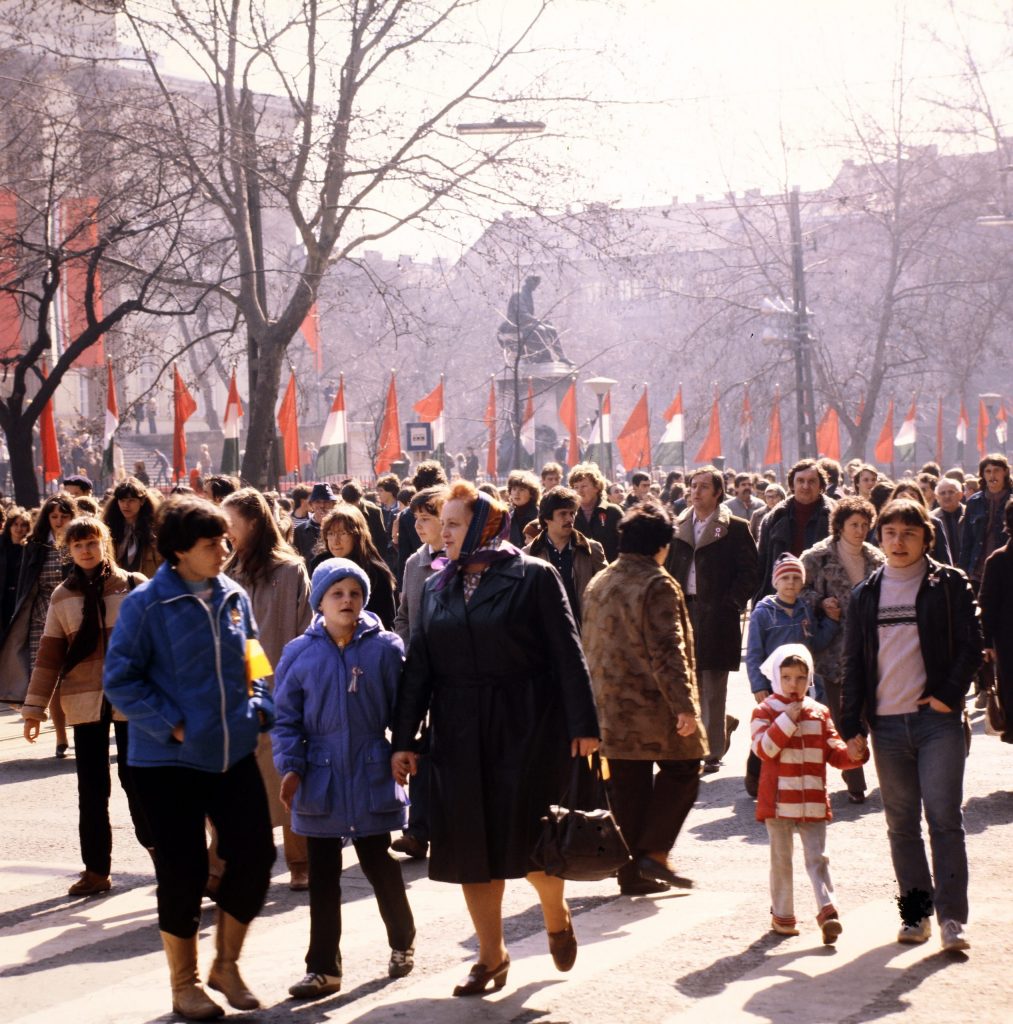
The opposition prepared speeches for the commemoration of March 15, 1988, which was quite something, since no speech had been made at a street demonstration since 1956. But at dawn that day, those who wanted to speak were taken away by the police, so, for example, Róza Hodosán spoke in place of her husband of the future liberal politician and Budapest mayor Gábor Demszky at the Batthyány Cultural Heritage Site, and philosopher Miklós Gáspár Tamás also spoke that day. This was the first demonstration where it was clearly stated that János Kádár should be removed from power.
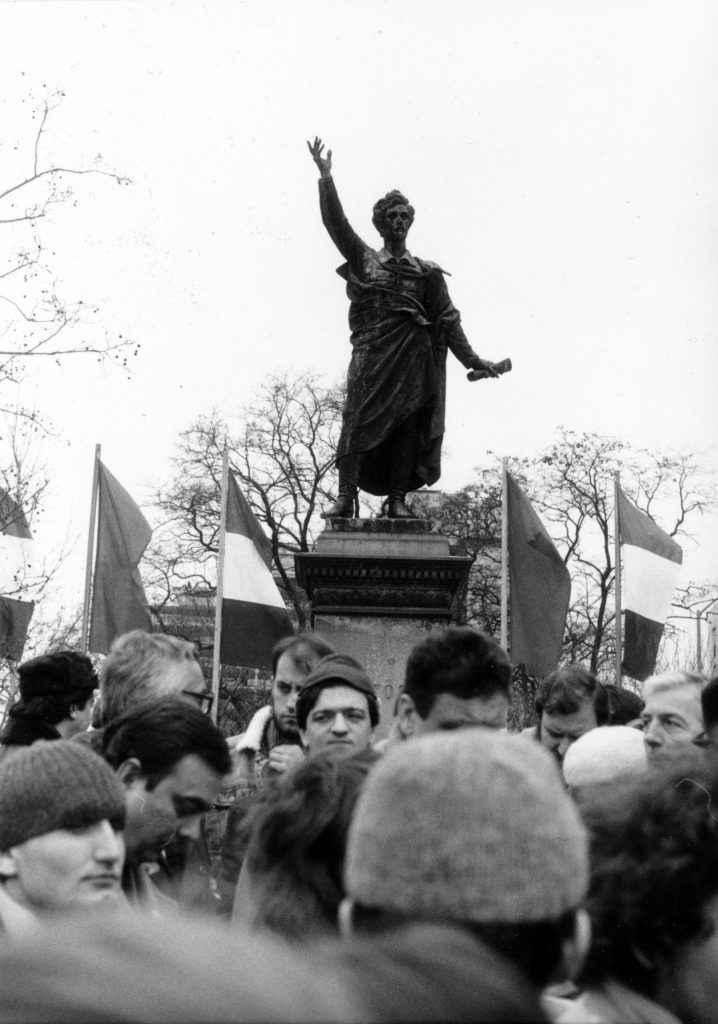
Twenty-five years ago, in 1989, on March 15, which was once again declared a national holiday, tens of thousands of people marched in Kossuth Square, where János Kis (Hungarian liberal philosopher, founding member and first leader of the SZDSZ liberal party), Prime Minister Viktor Orbán, and philosopher Miklós Gáspár Tamás made speeches demanding Hungary’s withdrawal from the Warsaw Pact. In Freedom Square, on the steps of Hungarian Television, György Cserhalmi read out the 12 points of the opposition, which had organized the demonstration, and then declared that Hungarian Television belonged to the entire Hungarian nation.
Among other things, people demanded free and fair elections, the independence of the judiciary, the rule of law instead of a police state, freedom of the press, the abolition of the monopoly of the state news media, freedom of conscience and education, social control of public spending, a functioning market, a halt to money-guzzling and environmentally destructive large-scale investments, the dismantling of bureaucracy and the apparatus of violence, and an end to the falsification of history.
“The Revolution of 1848/49 and the War of Independence set the European standard for national independence and political democracy for the Hungarian nation. From that moment on, no government could avoid being measured against that benchmark.”
With these words Viktor Orbán began his speech in Kossuth Square. And he said that the ruling party must be denied any chance to “pull us back into dictatorship.”
A week before the formation of the Opposition Round Table, complete harmony prevailed at this rally, with those in attendance advocating for a free democratic Hungary and demanding justice for 1956.
Museum Boulevard from the entrance of the National Museum in the direction of Museum Street. Photographers take pictures of the participants of the March 15 celebrations from the top of a phone booth. Photo: Fortepan / Zoltán Marics
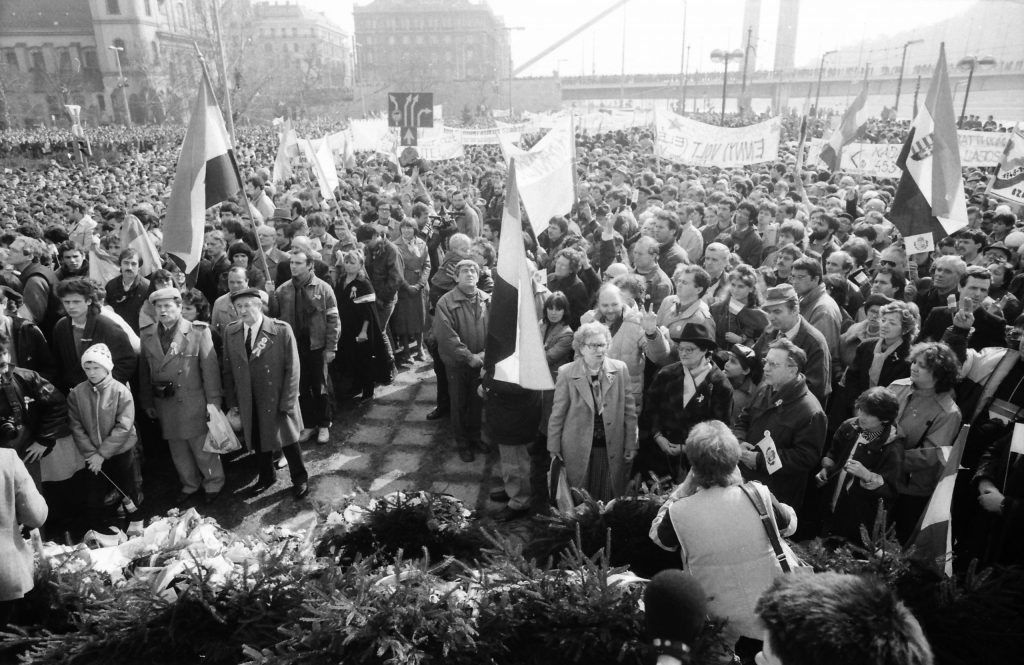
Fortepan / Zsolt Szigetváry
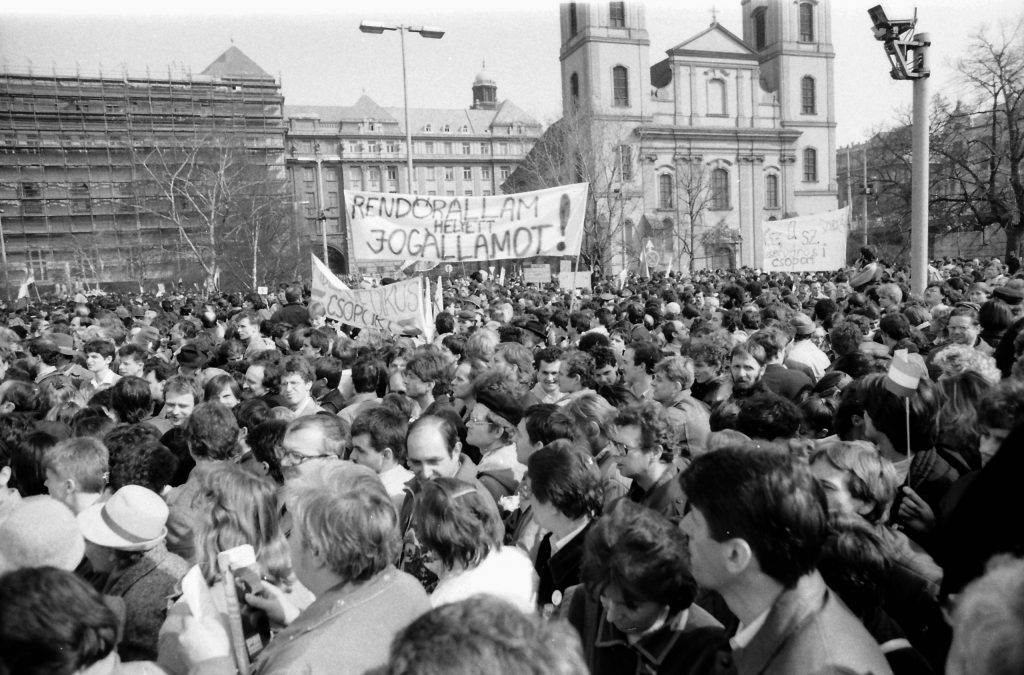
Múzeum Boulevard from the entrance of the National Museum in the direction of Múzeum Street. Photographers take pictures of the participants of the March 15 celebrations from the top of the phone booth. Photo: Fortepan / Zoltán Marics

Featured photo: State celebration 1947, Budapest, Photo: Pál Berkó / Fortepan